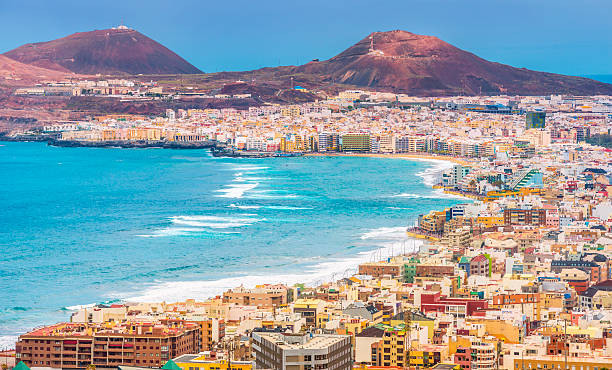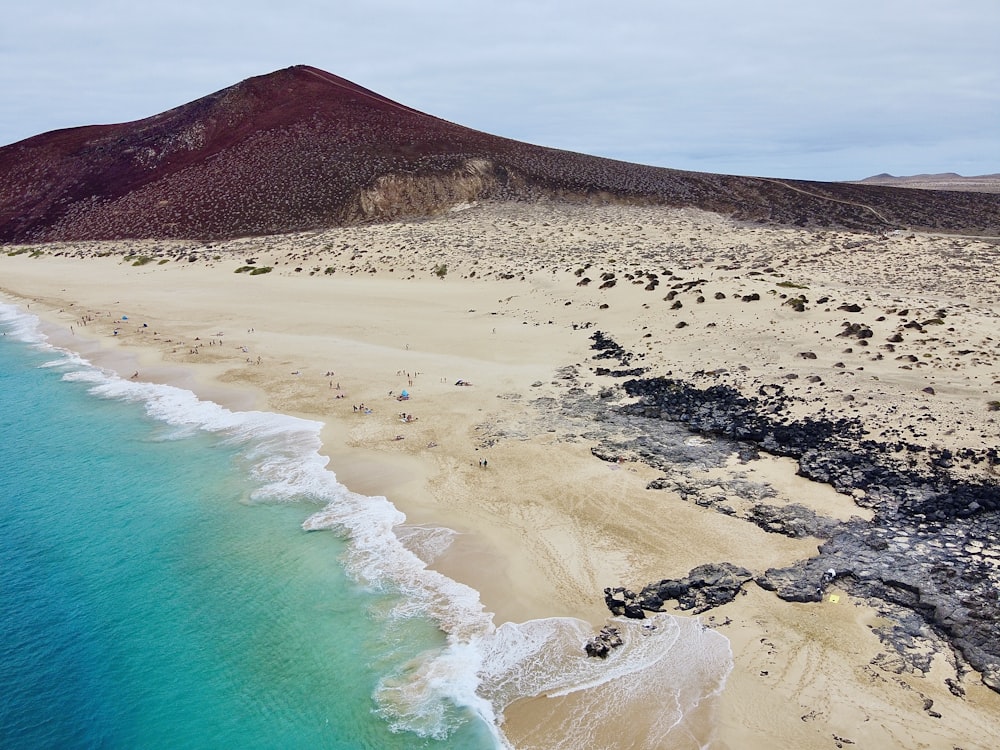The Canary Islands are one of the best beach destinations in Europe. Blessed with near year-round sunshine and warm temperatures, this archipelago of volcanic isles sits just off the coast of north-west Africa but is officially part of Spain. Comprised of eight islands each with its own spectacular scenery and individual character, the Canary Islands offers travellers variety, unique experiences, and endless stretches of sensational coastline.
It can be hard to know where to start when planning a beach holiday to the Canary Islands because there is simply too much choice. However, this wealth of opportunity means that you can definitely find what you’re looking for, whether you are seeking a family-friendly resort with water-sports or peace and quiet on the secluded black sand beaches that this volcanic archipelago is known for.
In this guide, we will explore the best beaches of the Canary Islands’ four largest isles: Gran Canaria, Lanzarote, Fuerteventura, and Tenerife. From dolphin spotting hotspots to mesmerising mountain backdrops, these coastal gems are sure to be the highlight of your holiday to the Canary Islands.
Gran Canaria
Home to one of the two capital cities of the Canary Islands, Gran Canaria is one of the most-visited destinations. The thriving Port of Las Palmas attracts cruise ships from around the world and there is an endless choice of things to do in Gran Canaria for tourists whether they are eight or 80. The island’s beaches are just as varied as its many other attractions.
For those flying to Gran Canaria, upon arrival you have the choice to head north to buzzing Las Palmas or wind along the coast to the quieter golden bays of the south. In the south-west are glorious white-sand beaches lapped by gentle crystal-clear waves. Playa de Amadores is a purpose-built but picture-perfect family-friendly resort, while neighbouring Puerto Rico de Gran Canaria has an alluring tropical atmosphere like its Caribbean counterpart.
At the southern tip of Gran Canaria you will find less traditional but equally attractive beach destinations. Younger travellers keen for nightlife will love the club- and bar-lined Playa del Ingles, one of the archipelago’s best urban beaches. In total contrast is the nearby Maspalomas dunes, a 6km stretch of undulating sand dunes that look almost unreal and provide privacy and great views.
Lanzarote
Lanzarote is the easternmost island in this archipelago, praised for its steady sunshine and warm temperatures that can be experienced in most months of the year – if not all. It has an exceptionally dramatic geography that makes it an ideal beach destination for the adventurous.
The best bays in Lanzarote are surrounded by awe-inspiring volcanic scenery, red sand dunes and towering cliffs of black rock. Against this landscape, the beaches seem to glitter, and the sea is a regal shade of teal. Most loved is the sheltered Papagayo Beach of exceptional beauty: this shell-shaped cove has constantly calm waters, making it a great child-friendly location for sea swimming.
Other exceptional coastal gems in Lanzarote are the unique natural tunnels and caverns that were formed from volcanic lava. An example of these is the Jameos del Agua which is an unforgettable spot for swimming. The Jameos del Agua is also used as an auditorium, primarily as a truly astonishing venue for music concerts thanks to its amazing acoustics.
Fuerteventura
Fuerteventura is the self-proclaimed ‘beach in the Canaries’, boasting over 150km of white-sand shoreline and endless opportunities for water-sports. It is widely agreed that anyone looking for a pure and simple beach break should head to Fuerteventura for their Canary Islands holiday. However, with incredible bays north, south, east, and west, it is still worth travelling around during your trip.
Just half an hour north from the airport is Corralejo, celebrated as having some of the best beaches in Fuerteventura. Those seeking rest and relaxation can find quiet corners surrounded by gleaming sand and sea with sublime views out to the Isla de Lobos. In contrast, those after adventure will delight in the opportunities for water-sports in Corralejo. Windsurfing is especially rewarding here, but tourists can also enjoy jet-skiing, stand-up paddle-boarding, snorkelling, and sailing.
Tenerife
Last but not least is Tenerife, largest of the Canary Islands. With national parks, hill country hikes, charming towns, and family-friendly attractions in addition to its beautiful beaches, this is a great destination for travellers who want a holiday with a little bit of everything.
The airport here is to the south of the island while the most sought-after beaches are in the north, but there are many transport options for those who want to end their holiday with time on the coast. You can search for the best airport transfers to Tenerife South in advance of your trip to find the best deals and ensure peace of mind during your stay.
Tenerife has its fair share of traditional white bays, but it is the black sand beaches that are most impressive. Playa Jardin on the north coast in Puerto de la Cruz is backed by enchanting gardens and boasts three separate seafronts, with spots suited to safe swimming, surfing, and seaside strolls.
In the south of the island is Playa de la Tejita, a great option for those who do not need the conveniences of a typical beach resort. Playa de la Tejita is a vast wild bay where black and golden sands combine, sheltered by looming cliffs. The strong breeze here makes it a popular spot for surfing and windsurfing.
Published by HOLR Magazine.



